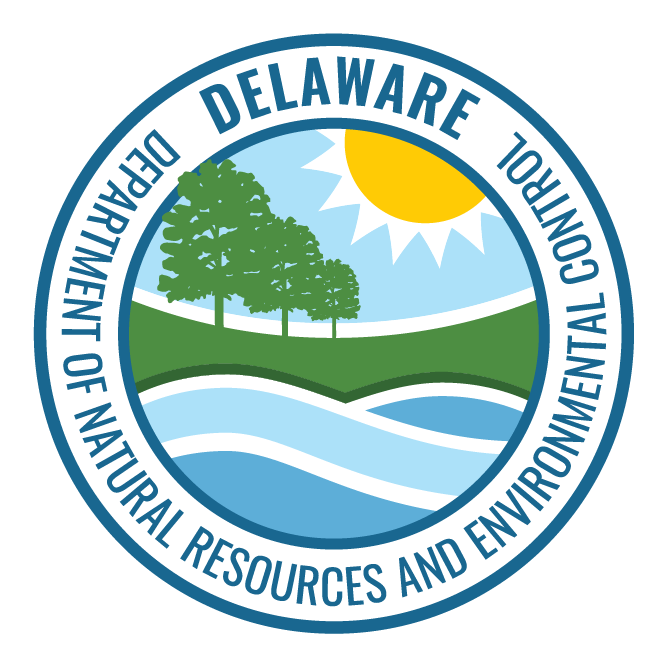Pages Tagged With: "hazardous"
Financial assurance for hazardous waste management
Financial assurance for RCRA hazardous waste facilities under the Delaware Department of Natural Resources and Environmental Control (DNREC) ensures that operators have the necessary financial resources to cover closure, post-closure care, and corrective action costs. These requirements are enforced under both state and federal hazardous waste regulations to prevent environmental contamination and protect public health.Pending Hazardous and/or Non-Hazardous Solid Waste Transporter Permits
A listing of recent applications to the DNREC Div. of Waste and Hazardous Substances for permits to transport hazardous and/or non-hazardous solid wastes in, out of, or through the State of Delaware.Pending Hazardous and/or Non-Hazardous Solid Waste Transporter Permits
A listing of recent applications to the DNREC Div. of Waste and Hazardous Substances for permits to transport hazardous and/or non-hazardous solid wastes in, out of, or through the State of Delaware.Pending Hazardous and/or Non-Hazardous Solid Waste Transporter Permits
A listing of recent applications to the DNREC Div. of Waste and Hazardous Substances for permits to transport hazardous and/or non-hazardous solid wastes in, out of, or through the State of Delaware.Hazardous and/or Non-Hazardous Solid Waste Transporter Permits
A listing of recent applications to the DNREC Div. of Waste and Hazardous Substances for permits to transport hazardous and/or non-hazardous solid wastes in, out of, or through the State of Delaware.Hazardous and/or Non-Hazardous Solid Waste Transporter Permits
A listing of recent applications to the DNREC Div. of Waste and Hazardous Substances for permits to transport hazardous and/or non-hazardous solid wastes in, out of, or through the State of Delaware.Hazardous and/or Non-Hazardous Solid Waste Transporter Permits
A listing of recent applications to the DNREC Div. of Waste and Hazardous Substances for permits to transport hazardous and/or non-hazardous solid wastes in, out of, or through the State of Delaware.Hazardous and/or Non-Hazardous Solid Waste Transporter Permits
A listing of recent applications to the DNREC Div. of Waste and Hazardous Substances for permits to transport hazardous and/or non-hazardous solid wastes in, out of, or through the State of Delaware.Hazardous and/or Non-Hazardous Solid Waste Transporter Permits
A listing of recent applications to the DNREC Div. of Waste and Hazardous Substances for permits to transport hazardous and/or non-hazardous solid wastes in, out of, or through the State of Delaware.Hazardous and/or Non-Hazardous Solid Waste Transporter Permits
A listing of recent applications to the DNREC Div. of Waste and Hazardous Substances for permits to transport hazardous and/or non-hazardous solid wastes in, out of, or through the State of Delaware.Notice of Public Meeting
DNREC and state and federal partners will hold a virtual meeting to provide information to the community regarding ethylene oxide.Hazardous and/or Non-Hazardous Solid Waste Transporter Permits
A listing of companies that have submitted applications for permits to transport regulated RCRA hazardous and/or non-hazardous solid wastes in, out of, or through the State of Delaware.Large Quantity Generators
If a facility generates hazardous waste in quantities greater than 1,000 kilograms (≈2,200 pounds) or generates acutely hazardous waste in quantities greater than 1 kilogram (≈2.2 pounds) in a calendar month, that facility is defined, under Delaware’s Regulations Governing Hazardous Waste, as a Large Quantity Generator (LQG). [panel type=”success” heading=”ContactElectronic Waste
In this world of rapidly changing technology, disposal of electronic waste (e-waste) has created a growing waste stream. The Division of Waste and Hazardous Substances provides guidance for the management of these wastes by businesses under the state’s hazardous waste regulations.Contact Us
Universal Waste Rule
Universal wastes are items that are generated by a large number of businesses in relatively small quantities. Five hazardous wastes are identified as universal wastes under Section 273 of Delaware’s Regulations Governing Hazardous Waste. They are batteries, mercury-containing equipment, obsolete agricultural pesticides, lamps and aerosol cans. [panel type=”success” heading=”Contact Us”Solvent-Contaminated Cloth Wipes
The Delaware Department of Natural Resources and Environmental Control, Compliance and Permitting Section provides the following guidance on the management of cloth wipes, including shop towels, and rags contaminated with hazardous wastes identified via characteristic or listing in the Delaware Regulations Governing Hazardous Waste (7 DE Admin. Code 1302).Managing Fluorescent Lamps
The following are answers to commonly asked questions regarding the management of waste fluorescent lamps that exceed the regulatory limit for mercury via the Toxicity Characteristic Leaching Procedure (TCLP).Contact Us
Compliance and Permitting Section 302-739-9403
Very Small Quantity Generators
If a facility generates hazardous waste in quantities of less than 100 kilograms (≈220 pounds or approximately 25 gallons) or is the generator of acutely hazardous waste in quantities of less than 1 kilogram (≈2 pounds) in a calendar month, that facility is defined, under Delaware’s Regulations Governing Hazardous Waste, as a Very Small QuantityAuto Repair Shop Waste
Auto Repair Shops generate hazardous waste that must be managed in accordance with Delaware’s Regulations Governing Hazardous Waste. Hazardous waste mismanagement adversely impacts human health and the environment.Contact Us
Compliance and Permitting Section 302-739-9403
Salvage Yards
Salvage yards are an important part of the economy. They provide a valuable service, helping recycle what can be recycled and dispose of what cannot.Contact Us
Compliance and Permitting Section 302-739-9403
Hazardous Waste
Hazardous wastes are solid wastes that are inherently dangerous to handle or dispose. They include chemicals such as solvents, mercury in thermometers, and lead in paint. The Division of Waste and Hazardous Substances regulates transporters, businesses and industry so that hazardous wastes are managed properly and cleaned up in the event of a spill orMercury and Mercury-Containing Equipment
Elemental mercury is liquid at room temperature, with a metallic and shiny appearance. It is conductive and highly volatile. Mercury can have serious health impacts on humans.Contact Us
Compliance and Permitting Section 302-739-9403
Used Oil Management
The following provides an overview related to commonly asked questions about the proper management and disposal of used oil regulated by Part 279 of Delaware’s Regulations Governing Hazardous Waste.Contact Us
Compliance and Permitting Section 302-739-9403 Transporter Permits 302-739-9403




